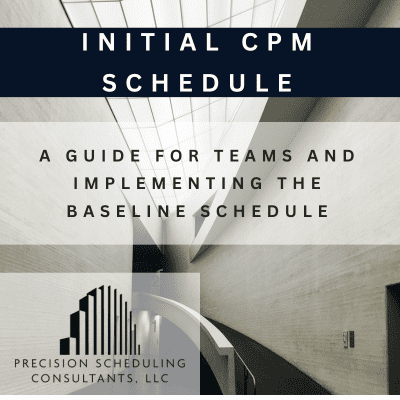Baseline schedule development in project management is essential for project success. Precision boasts extensive experience, making our team a top project controls consulting firm. Our skilled schedulers collaborate closely with superintendents and project managers to create a precise execution plan. This plan, known as the baseline schedule or as-planned schedule, is tailored to fit project requirements and management techniques.
While many construction schedulers possess moderate to high-level skills in technical applications, they often lack hands-on construction experience. This distinction sets Precision apart from competitors. Many of our scheduling consultants were project managers before becoming experts in scheduling technology.
A baseline schedule in project management’s effectiveness relies on the planning and quality of information used in its development. Remember, “garbage in, garbage out.” Our team ensures we gather accurate information during planning and scheduling. As a result, the project schedule becomes a valuable tool that enhances productivity instead of causing month-end delays. By adhering to contract specifications and project plans, Precision creates schedules compliant with all contract documents. Precision’s team of construction experts utilizes industry-leading scheduling techniques and software to assist clients in developing their project schedules.
Construction Scheduling Software
- Primavera (P6)TM
- Microsoft ProjectTM
Here are recommendations for developing and maintaining a construction baseline schedule:
- Calculate Original Durations: Determine planned durations by multiplying crew productivity rates by work quantities. Use historical data for accuracy.
- Account for Productivity Rates: Base productivity rates on the same crews performing similar work. This approach enhances reliability.
- Utilize Detailed Calendars: Incorporate workdays, non-working days, holidays, and potential weather days in schedule calendars.
- Include Non-Working Periods: Always include non-working winter periods in the program calendar to prevent scheduling conflicts.
- Maintain Living Documents: Treat project schedules as living documents. Regularly conduct schedule updates to reflect the current field situation.
- Align Daily Logs with the Schedule: Ensure that daily logs and contemporaneous records match the project schedule. This information helps owners and stakeholders make informed decisions.
In conclusion, developing and maintaining an effective construction schedule requires careful consideration of several key factors. First, accurately calculate original planned durations by using crew productivity rates and historical data. Avoid basing these durations on arbitrary sizing.
Next, ensure your schedules incorporate comprehensive calendars, including workdays, non-working days, holidays, and weather considerations. Implementing a fixed activity for visual clarity can also enhance understanding.
Finally, treat project schedules as dynamic documents that require regular updates. Align daily logs and contemporaneous records with the schedule for accurate field reflection. This ongoing attention to detail empowers owners and stakeholders to make informed decisions, ultimately driving project success. By following these recommendations, your construction schedules can enhance efficiency and productivity while minimizing disruptions.






